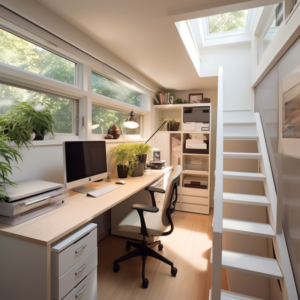Coworking spaces have revolutionized the way we work, fostering collaboration, flexibility, and community. As a decorator with a passion for innovative office design, I recognize the unique challenges and opportunities that coworking spaces present. In this article, we’ll delve into the world of shared offices and explore how thoughtful design can enhance productivity and the sense of belonging in these dynamic environments.
1. The Rise of Coworking: A Shift in Modern Work Culture:
- Understanding the evolution of coworking and its impact on work dynamics.
- The appeal of coworking spaces for freelancers, startups, and remote workers.
2. Flexibility and Adaptability: Key Design Principles for Coworking:
- Designing spaces that accommodate diverse working styles.
- How adaptable furniture and layouts promote workspace flexibility.
3. Creating Community: The Heart of Coworking:
- Fostering a sense of belonging and collaboration among coworkers.
- Design strategies for communal areas that encourage interaction.
4. Efficient Space Utilization: Making Every Inch Count:
- Space optimization techniques for coworking offices.
- Balancing shared and private work areas.
5. Navigating Acoustics: Ensuring a Harmonious Environment:
- Addressing noise and acoustics challenges in open workspaces.
- Design solutions to create acoustic comfort zones.
6. Designing for Wellness: Coworking Spaces that Promote Well-Being:
- Incorporating elements of biophilic design for a healthier atmosphere.
- The role of ergonomic furniture and amenities.
7. Branding and Identity: Creating a Unique Coworking Experience:
- Expressing the personality and values of your coworking space through design.
- Customization options for coworking branding.
8. Technology Integration: Seamless Connectivity for Coworkers:
- Ensuring reliable and accessible tech infrastructure.
- The importance of high-speed internet and versatile tech setups.
9. Privacy and Security: Striking the Right Balance:
- Providing options for private workspaces and secure storage.
- Maintaining a balance between openness and privacy.
10. Sustainability in Coworking: Eco-Friendly Practices and Design:
– Incorporating sustainable materials, energy-efficient systems, and waste reduction.
– The appeal of eco-conscious coworking spaces.
Conclusion:
Coworking spaces are at the forefront of modern work culture, offering flexibility, collaboration, and a vibrant community. By implementing thoughtful design principles that prioritize adaptability, community-building, and wellness, you can create a coworking space that attracts and supports a diverse range of professionals. Coworking is more than shared office space; it’s a thriving ecosystem where creativity and innovation flourish.



